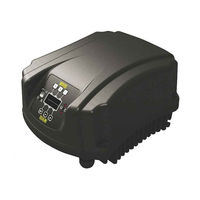DAB MCE-11/P Handbücher
Anleitungen und Benutzerhandbücher für DAB MCE-11/P. Wir haben 2 DAB MCE-11/P Anleitungen zum kostenlosen PDF-Download zur Verfügung: Installations- Und Wartungsanleitungen, Handbuch
DAB MCE-11/P Installations- Und Wartungsanleitungen (1016 Seiten)
Marke: DAB
|
Kategorie: Wechselrichter
|
Dateigröße: 12.84 MB
Inhaltsverzeichnis
-
Legenda7
-
Collegamenti12
-
Menù26
-
Sensori32
-
Menù Utente41
-
Menù Monitor42
-
LA: Lingua43
-
Menù Manuale44
-
CF: Portante55
-
Warnings70
-
Liability70
-
Index71
-
Applications71
-
Installation74
-
Connections75
-
Menus89
-
Sensors95
-
Flow Sensors95
-
User Menu104
-
Monitor Menu105
-
VF: Flow Display105
-
LA: Language106
-
Setpoint Menu106
-
Manual Menu107
-
VF: Flow Display108
-
Installer Menu108
-
AC: Acceleration118
-
Légende133
-
Avertissements133
-
Responsabilités133
-
Généralités134
-
Applications134
-
Installation137
-
Fixation Par Vis138
-
Connexions138
-
Menus152
-
Accès aux Menus152
-
Capteurs158
-
Menu Utilisateur167
-
Menu Afficheur168
-
LA : Langue169
-
Menu Manuel170
-
CF : Portante181
-
Legende196
-
Hinweise196
-
Haftung196
-
Allgemeines197
-
Anwendungen197
-
Installation200
-
Anschlüsse201
-
Wasseranschlüsse206
-
Menü215
Werbung
DAB MCE-11/P Handbuch (600 Seiten)
Inhaltsverzeichnis
-
Italiano
5-
Legenda
9 -
1 Generalita
10 -
-
Collegamenti12
-
-
-
-
-
Menù Utente35
-
-
Menù Monitor36
-
-
Menù Manuale38
-
-
-
-
-
CF: Portante49
-
-
-
English
59-
Warnings
63 -
Key
63 -
Liability
63 -
-
Connections66
-
-
-
Menus76
-
-
-
-
-
User Menu89
-
Monitor Menu90
-
Manual Menu92
-
-
-
AC: Acceleration103
-
Table 28: Alarms108
-
-

